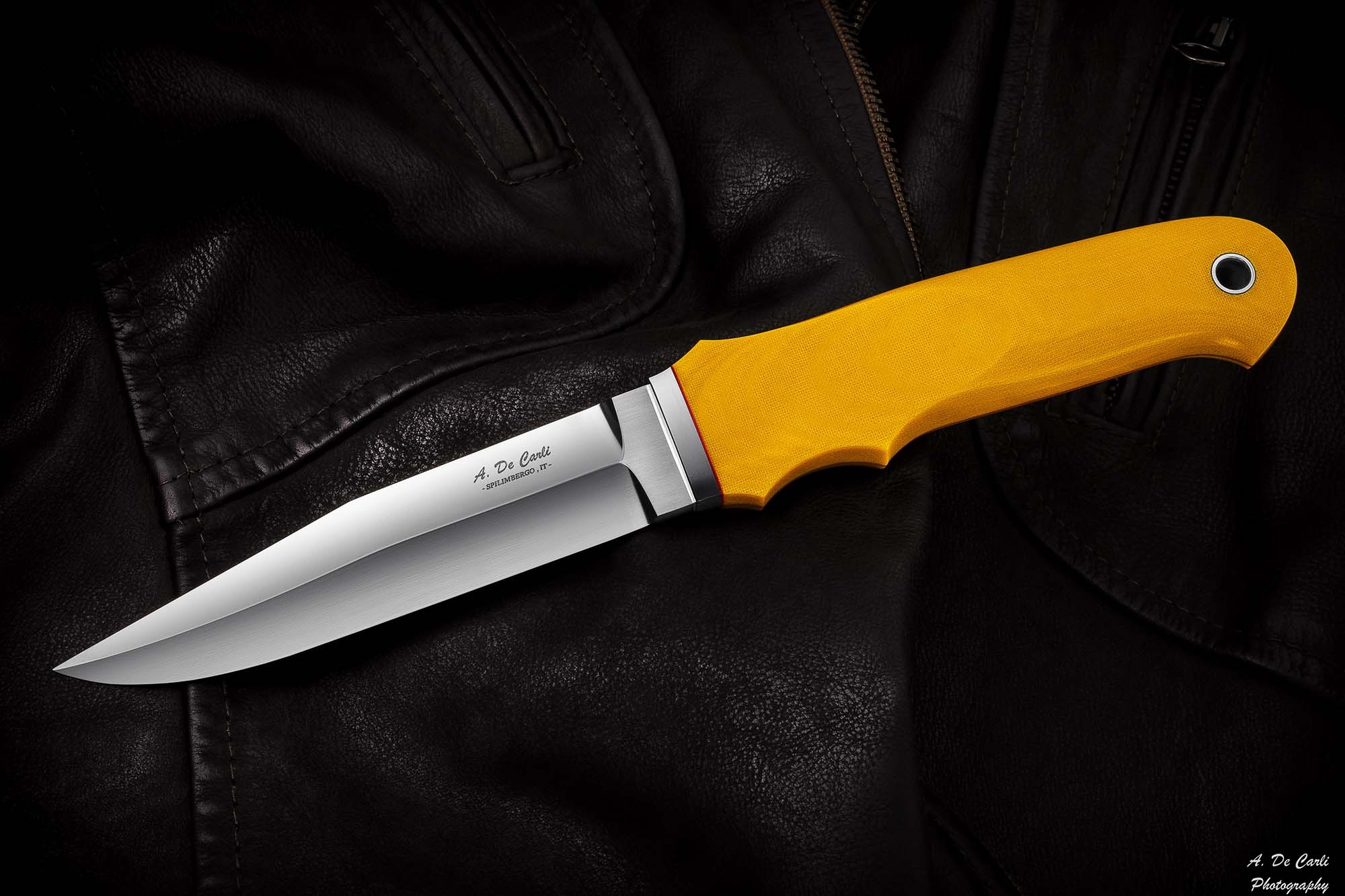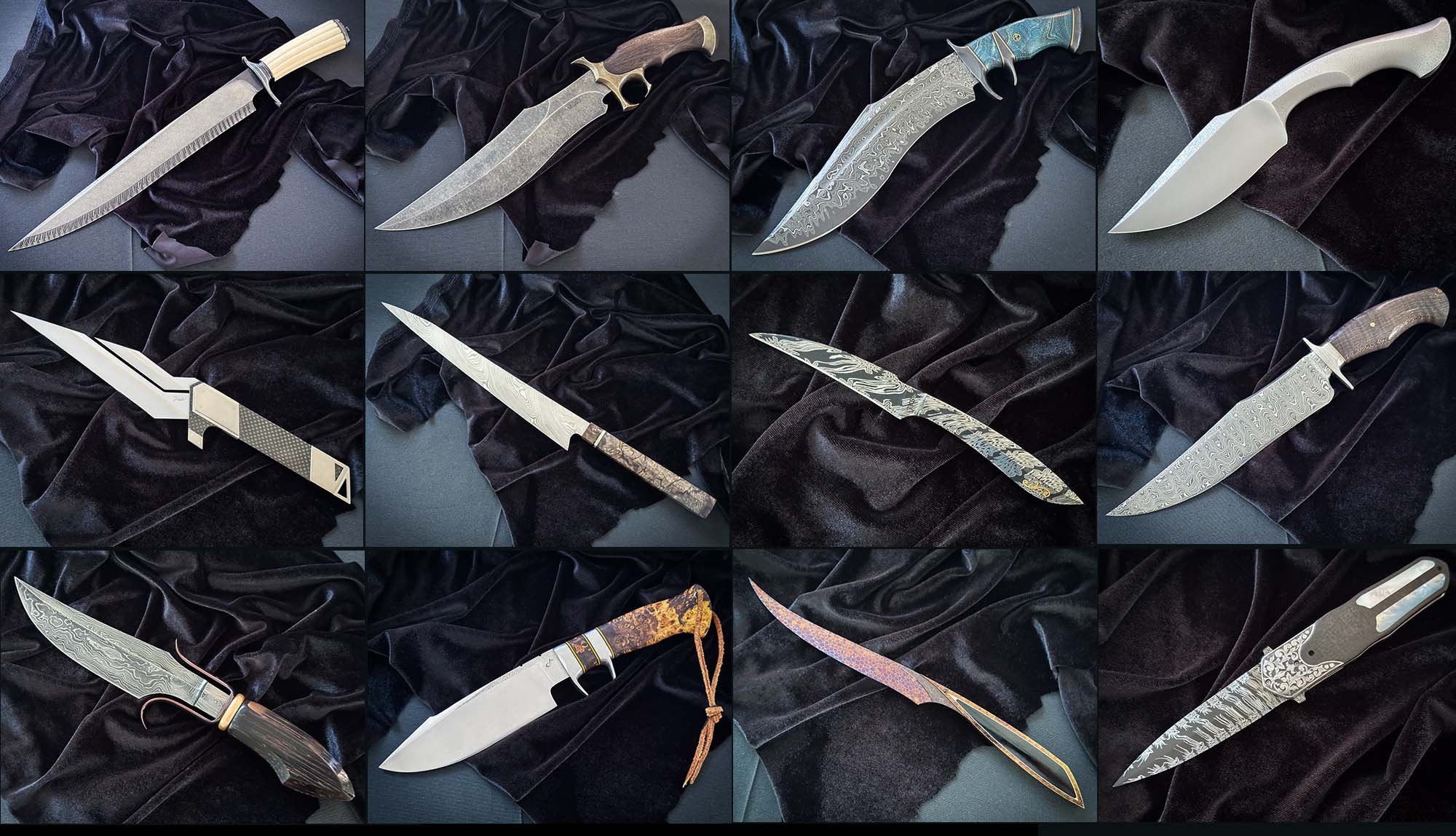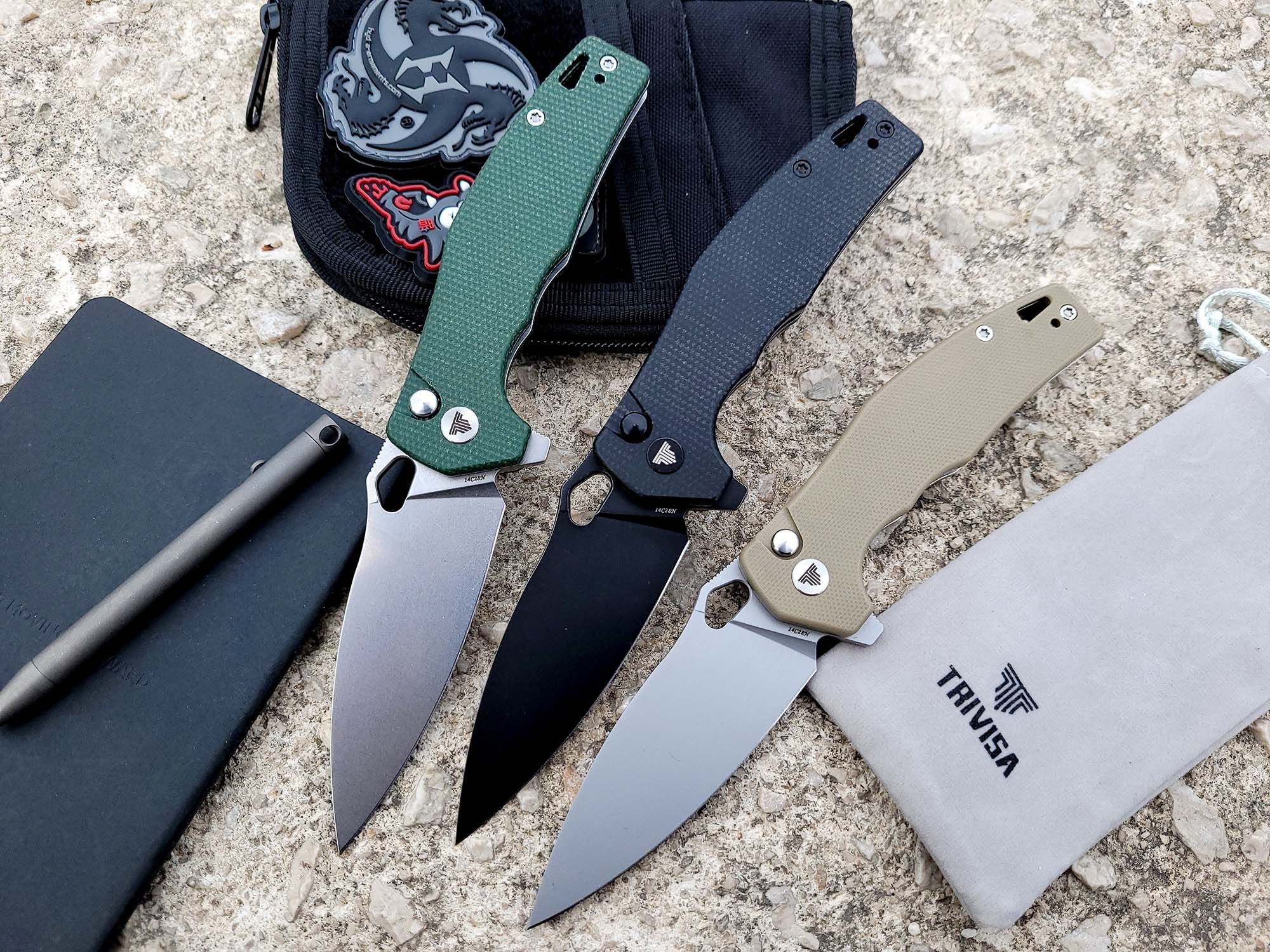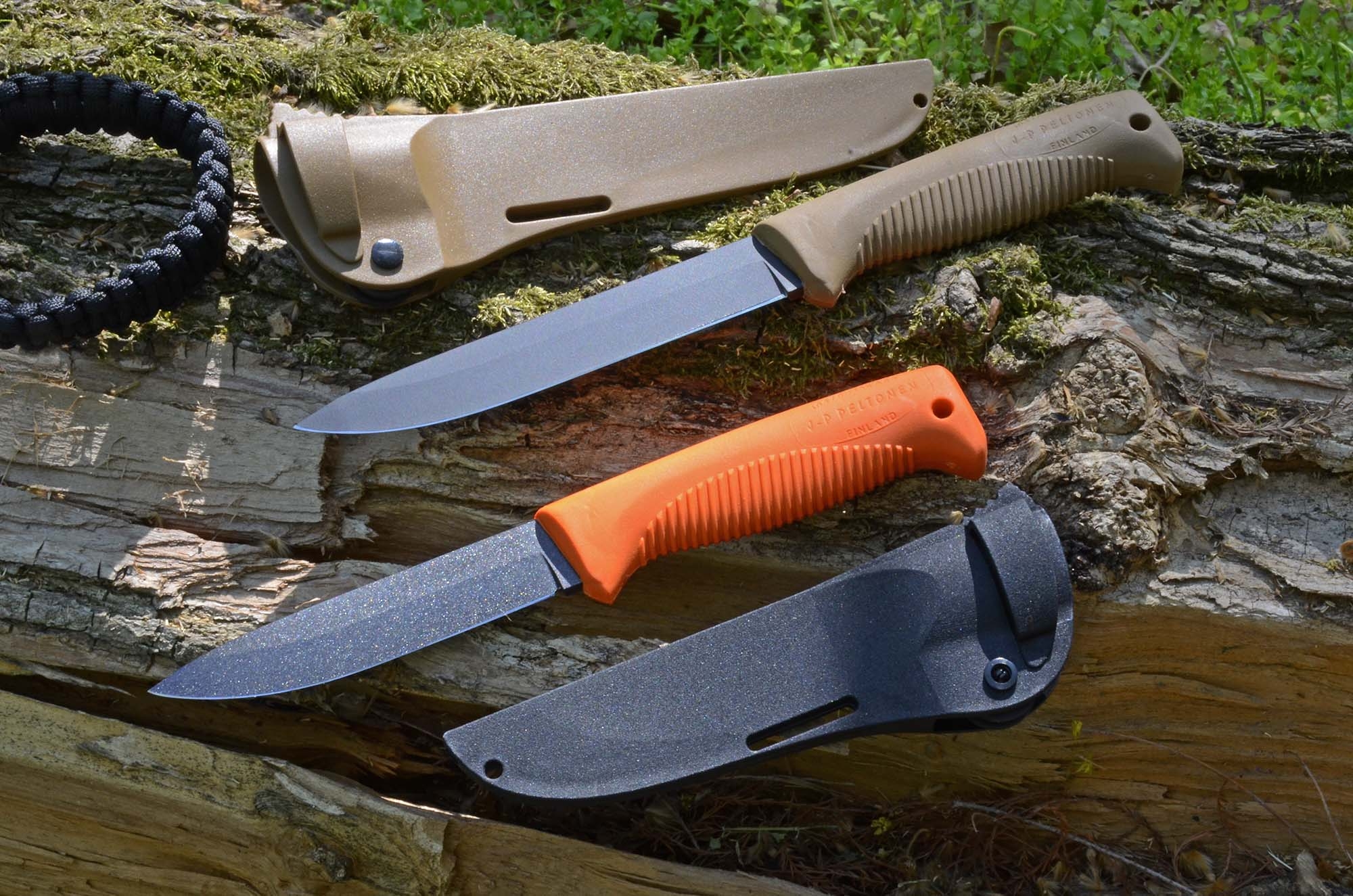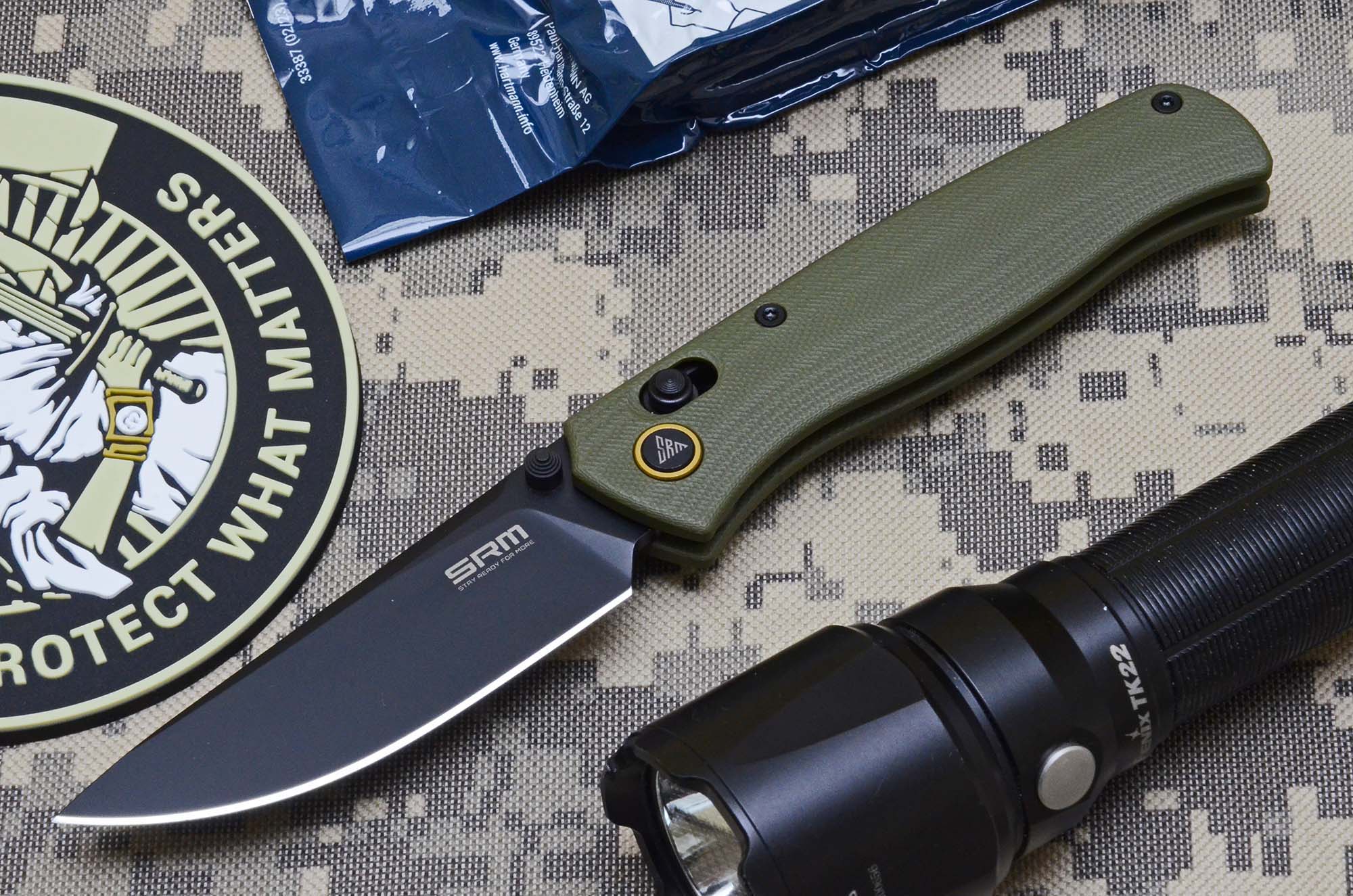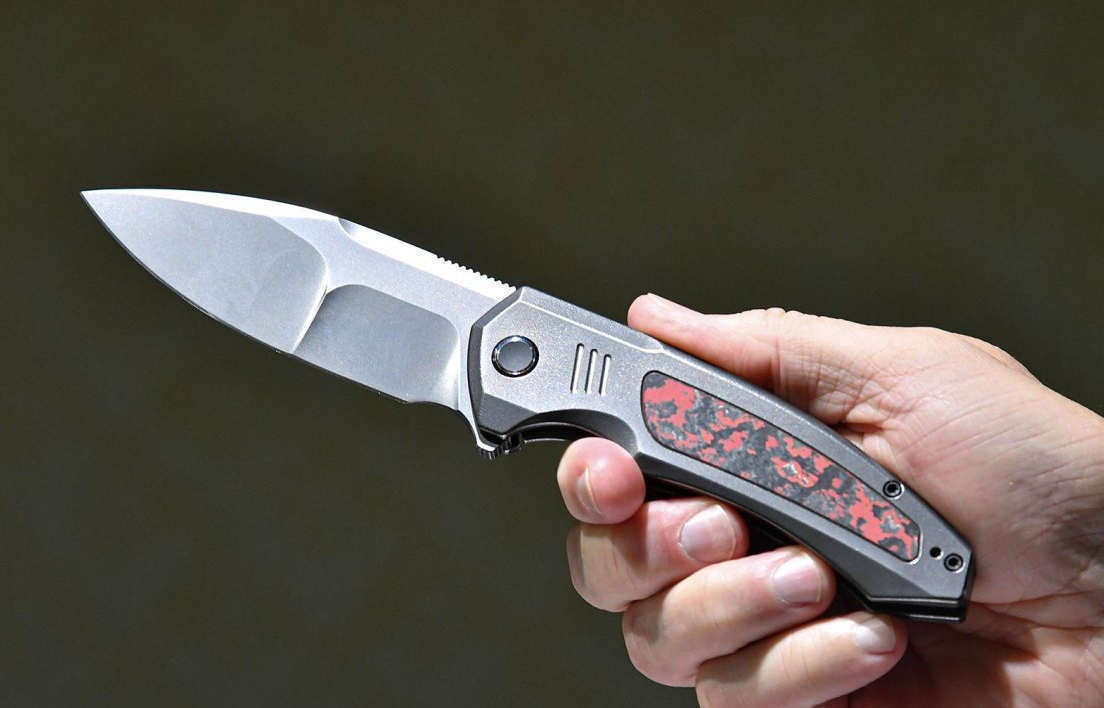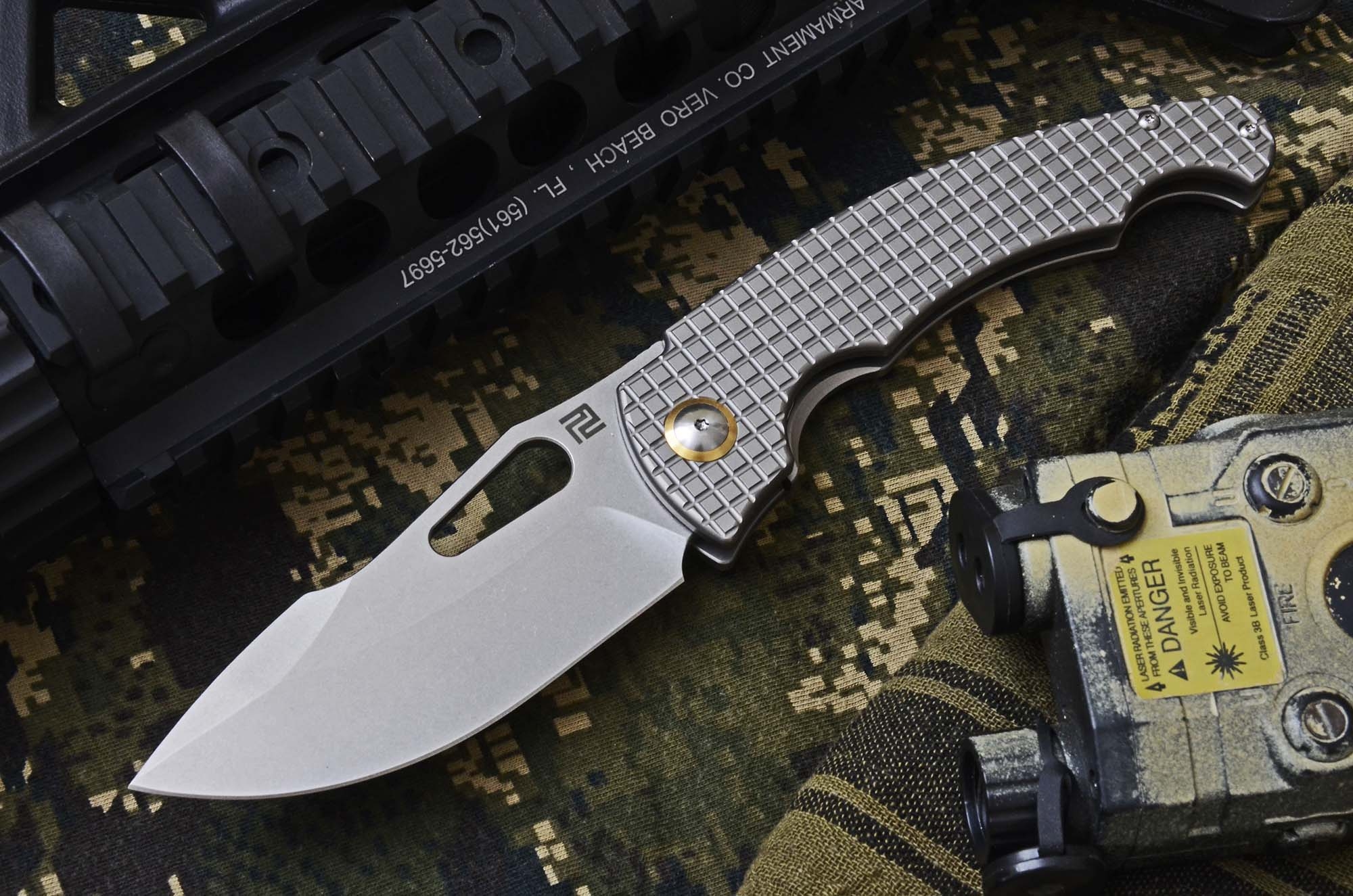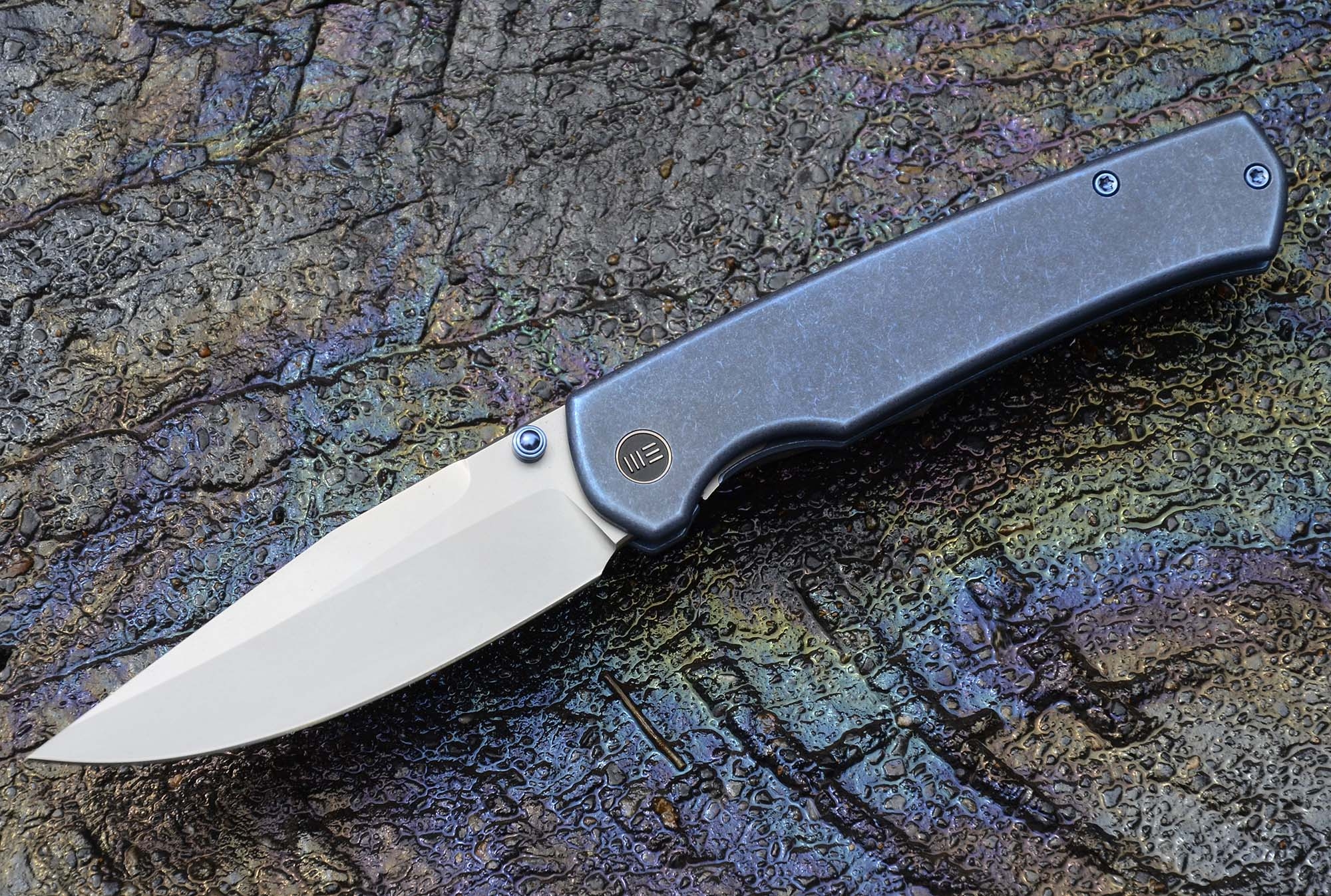The story of CMBMADEKNIVES, which for simplicity's sake we will refer to from now on as simply CMB, is the same as many companies in China that started out as knife manufacturers for third parties, but after gaining a good deal of experience decided to stand on their own two feet and come to market under their own brand name. Founded in 2010 in Guangdong Province, CMB waited exactly 10 years to take this step: it can hardly be said that it was a hasty choice.
CMB's catalog is very rich and constantly evolving, and you can browse it by visiting the CMB website or the company's various social channels. To make an initial contact with CMB's products, we requested a couple of "entry level" samples with a selling price under 80 euros. The two models we present in this article are the Predator and the TNB, two EDC folders that share a price tag of around 70 euros and are distinguished by their blade locking system. The former, in fact, has a crossbar lock called "Axis Lock," while the latter relies on a button lock system to deploy the blade.
CMB Predator and TNB: cheap, but not cheaply made
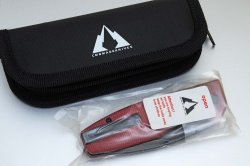
Let's start from the outside, namely the packaging, which is identical for both models. The knives come in a cardboard box with silver trim, containing a Nylon pouch with the company's logo. Inside, the knife is further protected by a clear plastic bag sealed with a sticker that warns us about the contents and suggests not to leave the knife within reach of children. The only accessory is a microfiber cloth, but given the asking price, there is nothing to complain at all.
Let's start with examining the Predator model: this is a folding knife with a blade made of 14c28n steel, a high chromium alloy characterized by great strength, good edge retention and marked ease of processing, and thus also of re-grinding. The version we present bears the code 08RB and provides a black stonewashed finish, but the knife is also available with a partially satin-finished blade (08RS) or completely in white (08RW). The blade, with a drop point profile, is 87 millimeters long for a maximum thickness of 3.5 millimeters and is offered with only the flat grind option. For easy one-handed opening there is a classic cylindrical thumb stud on both sides.
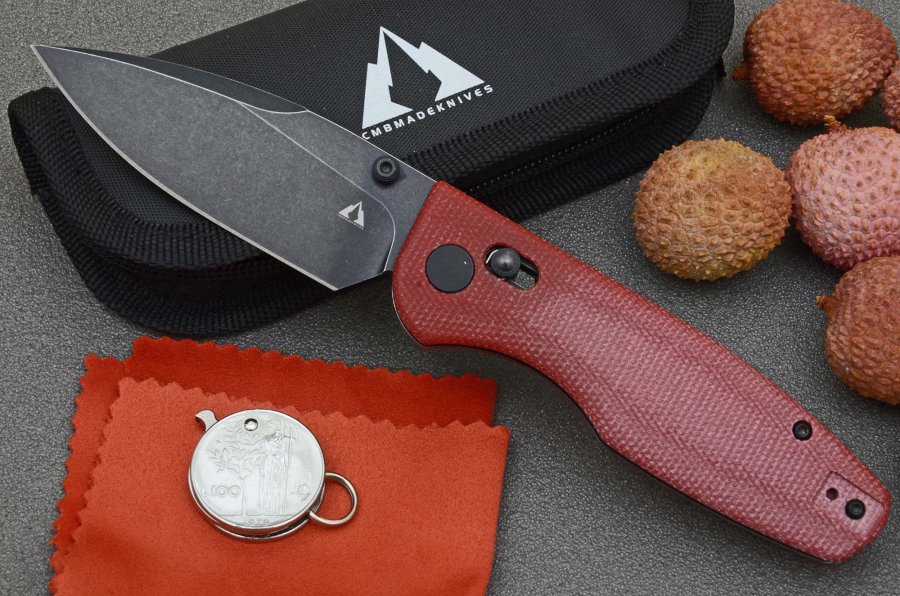
Machining of the blade show no uncertainties, with well-made flat surfaces and grind and a smooth finish. The marks are unobtrusive: on the left side we find the manufacturer's logo, placed on the grind, while on the right side is the type of steel, in characters almost invisible to the naked eye. The factory sharpening is well made. According to the manufacturer's claims, the hardness of the blade is between 58 and 62 HRC, which is relatively high but consistent with the type of steel used. The blade deploys very smoothly around the pivot pin with the help of a ceramic ball bearing with copper bushing. Once the opened position is reached, the Axis Lock system, consisting of a spring-loaded crossbar perpendicular to the blade, locks it open by fitting into a milling in the tang. To unlock the blade, simply act on one or both of the pins that protrude from the handle, pulling them backward. The system is very practical and works well – it will surely appeal to those who dislike liner or frame lock folders. The Predator handle can feature Micarta scales, as in our case, or G10 scales, mounted on a pair of steel plates.
The grip size is generous, making the Predator an attractive choice for users with larger than average hands. The Micarta workmanship, which on our Predator version has a pleasing red hue, is good, and even the small cutout to swap the clip from one side to the other shows very well executed edges and planes. The clip is stainless steel, with the same finish as the blade, and allows the knife to be carried tip-up. The massive spacer, which takes up almost a third of the space between the plates, is the same color as the handles. The Predator's weight is 132 grams, not a feather, but given the size of blade and handle we don't consider this a major flaw. In the end, the Predator comes across as a compact, but not overly so, EDC folder, with a blade and handle that can offer that extra something when you need to apply a little more force into the cut. The Axis lock will surely be appreciated by users (and there are quite a few of them) looking for an alternative to liner and frame lock systems. The retail price of about 70 euros, regardless of blade finish and handle material, is certainly worthwhile.
The CMB TNB up close

Let us now look at some details of the TNB model, which has the same price as the Predator and was designed by Hydra Design, i.e., Alessandra De Santis, whom our readers probably already know since she designed, among many others, the Böker Yokai knife, which we already presented to you on these pages.
The TNB uses a side-button lock, a system that is gaining a lot of popularity among Chinese-made knives because of its undeniable practicality. In fact, to unlock the blade it is sufficient to press the appropriate button with the thumb, without having to change the grip on the knife. Compared to a liner lock system, this is quite a step forward, at least at the operational level. Which of the two locking systems is more durable and reliable is a dilemma about which rivers of ink have already been spilled and which we will not address today.
The TNB's clip-point profile blade is made of 14c28n steel and on the model under test (version 14B) has a black stone-washed finish, but it is also available in white. The blade length is 73 millimeters for a thickness of 3.2 millimeters. Compared to the previous model, here we find a few more markings, but not too many: on the left side of the blade we find the manufacturer's logo, while on the right side there is Hydra Design's and the microscopic steel type marking. On the clip, on the other hand, we find the inscription Hydra Design, also in very small letters. Speaking of the clip, this is fixed to the right side of the handle and allows a deep tip-up carry position. It can be removed or mounted on the opposite side by loosening the two Torx screws that fix it to the plates. On the handle end there is a knurled spacer with the lanyard hole, featuring a triangular shape that is one of the recurring elements in knives designed by Hydra Design.
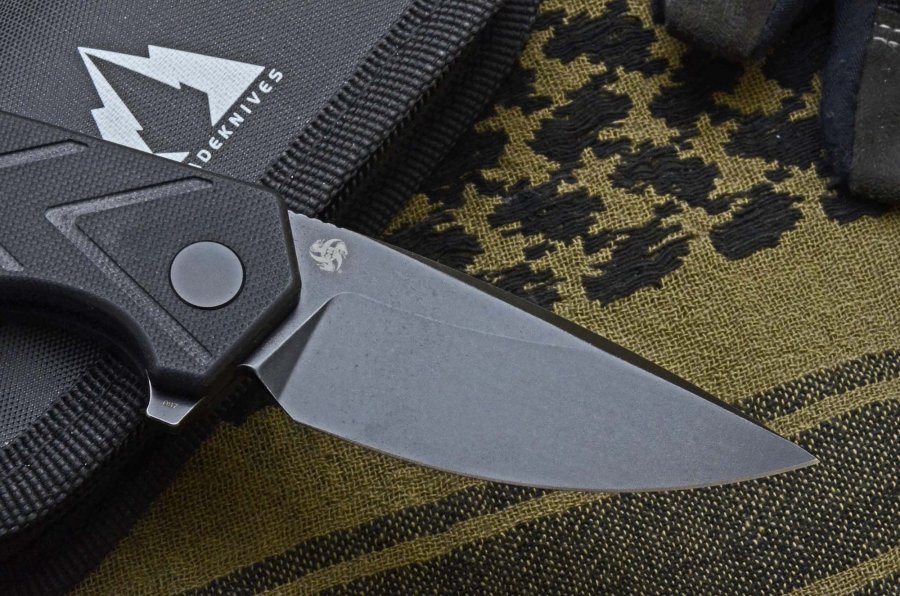
Blade length and thickness have a positive effect on the knife's weight, which is 99 grams. The blade is opened by operating a side flipper, which, thanks to a ceramic ball bearing on the pivot pin, allows for a truly lightning-fast deployment. The blade can also be opened by pressing the button and a small flick of the wrist. Closing is just as easy: a slight pressure on the button is enough to unlock the blade, which closes again by gravity. Of note, the push-button system is also a safety against unwanted opening of the blade.
Like all of Alessandra De Santis' projects, TNB is full of symbols, starting with the acronym TNB, which stands for Trinitrobenzene. It is an organic compound used mainly as an explosive, more powerful than the better known TNT. The three-dimensional texture on the G10 handle scales of TNB mimics the molecular structure of the compound. The scales are available in three colors: white, black and gray.
We asked Alessandra a couple of questions about the TNB:
Design-wise, does the push-button lock help, or does it cause any difficulties? If yes, what?
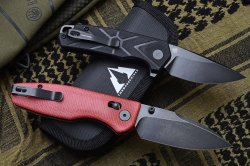
The push-button mechanism is definitely one of my favorites, as it is efficient, simple and intuitive to operate (even for novice users) but most importantly, it is safe – both when using the tool and when closing the blade – because the push-button, unlike the liner lock or frame lock, allows you to place your fingers out of the way of the blade deployment.
From the design point of view, the button lock is not particularly complex, but it requires some extra attention – for example, compared to the simpler liner lock or frame lock mentioned before – In terms of mechanical couplings and spring choice; it is necessary to find the right balance that allows easy opening of the blade, for example through the flipper (as in the case of the TNB), while maintaining the knife's safety conditions and avoiding that play is created on the blade once it is opened. From a purely aesthetic point of view, in some cases the presence of the button could spoil the harmony of the handle; therefore, in the design phase one must have in mind how to combine all the components without altering the continuity of a possible texture, for example.
What do you think are the strengths of the TNB?
I believe the TNB offers the right balance between simplicity and functionality. It also combines classic elements, such as the typical clip-point shape of the blade, with more original details such as the stylized texture recalling the molecular structure of the TNB, from which the knife takes its name.
I have received a lot of positive feedback from users who have purchased this knife; in addition to the design elements and its functionality, the size and weight, which were judged to be perfect for an EDC knife, were also highly appreciated in the TNB.
Wrapping up
Indeed, the TNB is an interesting design that has resulted in a light, well-proportioned, carefully made and competitively priced knife (about 70 euros). If you are looking for an EDC with some style, it is definitely the one for you. Also not to be despised is the Italian touch in the design.
The CMBMADEKNIVES can be purchased on several e-commerce sites, including Lamnia and Amazon.
CMB TNB and Predator specs and price
| Manufacturer: | CMBMADEKNIVES (China) | CMBMADEKNIVES (China) |
| Model: | TNB | Predator |
| Type: | EDC folder | EDC folder |
| Lock Type: | Push button | Axis lock |
| Handle Material: | Micarta | Micarta/G10 |
| Blade Material: | 14c28n stainless steel | 14c28n stainless steel |
| Blade Length: | 73 mm | 87 mm |
| Blade Thickness: | 3.2 mm | 3.5 mm |
| Overall Length: | 176 mm | 200 mm |
| Weight: | 99 g | 132 g |
| Clip: | Reversible | Steel |
| Price: | 70 euro approx. | 70 euro approx. |



